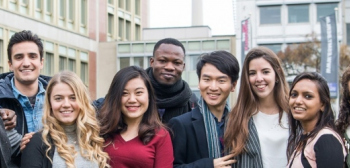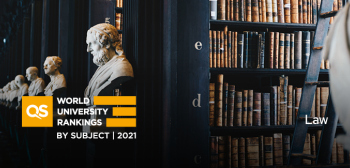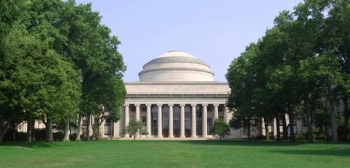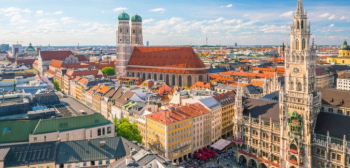柏林洪堡大学
About
Read more
Read less
The university was founded in Berlin in 1810, and the foundation concept of Wilhelm von Humboldt gave it the title "Mother of all modern universities".This concept envisaged a "Universitas litterarum" which would achieve a unity of teaching and research and provide students with an all-round humanist education. This concept spread throughout the world and gave rise to the foundation of many universities of the same type over the next century and a half.The concept of the academic and statesman Wilhelm von Humboldt was influenced, among others, by the reform ideas of the philosopher Johann Gottlieb Fichte, the first vice chancellor of the university, and by the theologian and philosopher Friedrich Schleiermacher.From the outset, the university in Berlin had the four classical faculties of Law, Medicine, Philosophy and Theology. Its first academic term began with 256 students and 52 teaching staff. Professors such as Georg Friedrich Wilhelm Hegel (Philosophy), Karl Friedrich von Savigny (Law), August Boeckh (Classical Philology), Christoph Wilhelm Hufeland (Medicine) and Albrecht Daniel Thaer (Agriculture), shaped the profile of the individual faculties in accordance with Humboldt's concept.Partly due to the influence of the natural scientist Alexander von Humboldt, the university pioneered the introduction of many new disciplines. The chemist August Wilhelm von Hofmann, the physicist Hermann von Helmholtz, the mathematicians Ernst Kummer, Leopold Kronecker, Karl Theodor Weierstrass (the "triple star of Mathematics") and the medical scientists Johannes Müller and Rudolf Virchow became known in their specialist areas far beyond the university in Berlin. Later, a total of 29 Nobel Prize winners did some of their scientific work at the university in Berlin, including Albert Einstein, Emil Fischer, Max Planck and Fritz Haber. And many famous people such as Heinrich Heine, Adelbert von Chamisso, Ludwig Feuerbach, Otto von Bismarck, Karl Liebknecht, Franz Mehring, Alice Salomon, Karl Marx and Kurt Tucholsky were also enrolled at the "Alma mater" of Berlin. Heinrich Mann was the first honorary doctor of the university after the end of the Second World War.
About
The university was founded in Berlin in 1810, and the foundation concept of Wilhelm von Humboldt gave it the title "Mother of all modern universities".This concept envisaged a "Universitas litterarum" which would achieve a unity of teaching and research and provide students with an all-round humanist education. This concept spread throughout the world and gave rise to the foundation of many universities of the same type over the next century and a half.The concept of the academic and statesman Wilhelm von Humboldt was influenced, among others, by the reform ideas of the philosopher Johann Gottlieb Fichte, the first vice chancellor of the university, and by the theologian and philosopher Friedrich Schleiermacher.From the outset, the university in Berlin had the four classical faculties of Law, Medicine, Philosophy and Theology. Its first academic term began with 256 students and 52 teaching staff. Professors such as Georg Friedrich Wilhelm Hegel (Philosophy), Karl Friedrich von Savigny (Law), August Boeckh (Classical Philology), Christoph Wilhelm Hufeland (Medicine) and Albrecht Daniel Thaer (Agriculture), shaped the profile of the individual faculties in accordance with Humboldt's concept.Partly due to the influence of the natural scientist Alexander von Humboldt, the university pioneered the introduction of many new disciplines. The chemist August Wilhelm von Hofmann, the physicist Hermann von Helmholtz, the mathematicians Ernst Kummer, Leopold Kronecker, Karl Theodor Weierstrass (the "triple star of Mathematics") and the medical scientists Johannes Müller and Rudolf Virchow became known in their specialist areas far beyond the university in Berlin. Later, a total of 29 Nobel Prize winners did some of their scientific work at the university in Berlin, including Albert Einstein, Emil Fischer, Max Planck and Fritz Haber. And many famous people such as Heinrich Heine, Adelbert von Chamisso, Ludwig Feuerbach, Otto von Bismarck, Karl Liebknecht, Franz Mehring, Alice Salomon, Karl Marx and Kurt Tucholsky were also enrolled at the "Alma mater" of Berlin. Heinrich Mann was the first honorary doctor of the university after the end of the Second World War.
University highlights
- 2012#130
- 2014#126
- 2015#134
- 2016#=126
- 2017#=121
- 2018#120
- 2019#121
- 2020#=120
- 2021#117
- 2022#=128
- 2023#=131
- 2024#120
- 2025#=126
- 2026#130
QS Stars is a rating system that helps you select the right university based on your
interests. It provides a detailed look at an institution, identifying which universities rate highest in
the
specific topics that matter to you, like facilities, graduate employability, social responsibility,
inclusiveness, and more.
Campus locations
Unter den Linden 6, Berlin, DE,
Unter den Linden 6 , Berlin , Germany , 10099
Similar Universities
Karlshochschule International University
Karlsstr. 36-38, Karlsruhe
Macromedia University of Applied Sciences
Macromedia University of Applied Sciences, Berlin
柏林欧洲管理与技术学院
Schlossplatz 1, Berlin
ESCP Europe Business School
Heubnerweg 8-10, Berlin
Hertie School of Governance
Friedrichstr. 180, Berlin
Macromedia University of Applied Sciences
Mehringdamm 33, Berlin
Related content
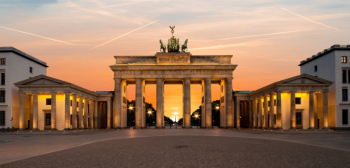
柏林
QS Staff
Writer
更新日期
1.2k
0

在德国用英语学习
Laura
Tucker
更新日期
1.7k
2

2014年经济适用留学城市排名
Laura
Bridgestock
更新日期
706
0

最具价值的国际留学目的地
QS Staff
Writer
更新日期
441
0

2024年QS最佳留学城市排名:今年有哪些新晋城市?
alexandru
Croitoru
更新日期
1.8k
0
Test preparations
Humboldt-Universität zu Berlin
basic
17
no
6048
XL
CN






